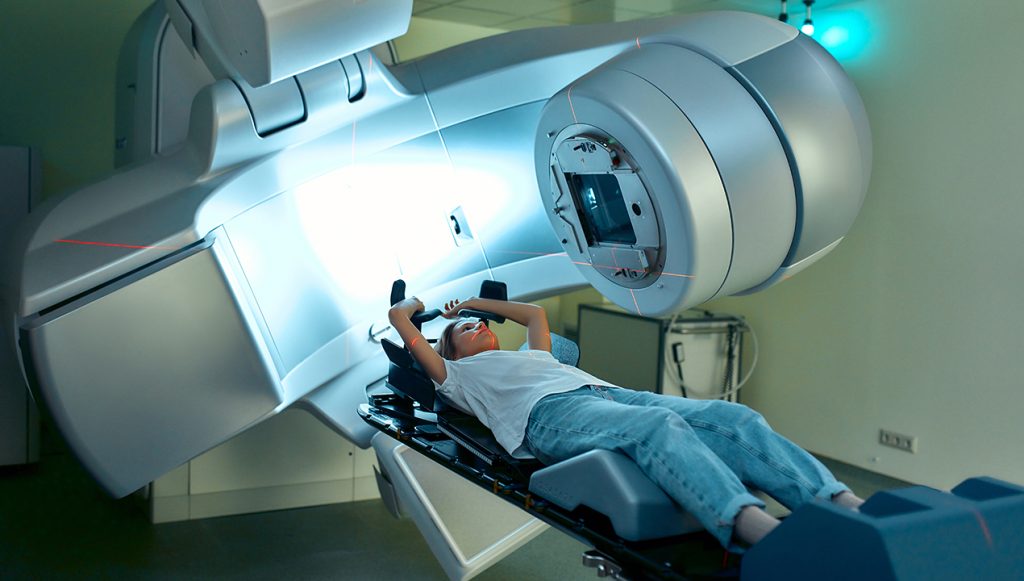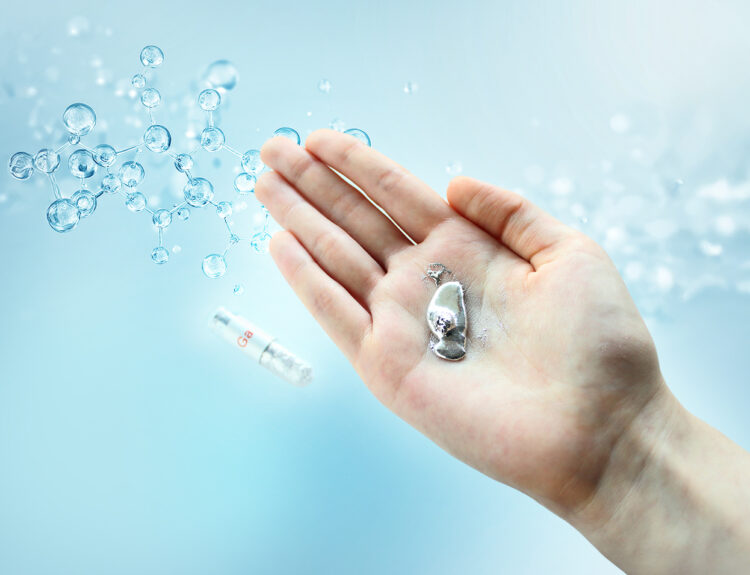Facing breast cancer is a journey filled with ups and downs. Just when you think the road is getting smoother, the fear of recurrence can cast a shadow. The fundamental truth, however, is this – you are never traversing this path in isolation. We are here to stand with you, offering our support by sharing the valuable insights contained in this blog. In this blog, we want to embark on this journey together and explore the world of breast cancer recurrence, demystify what it entails, discuss what you might expect and most importantly, uncover ways to find strength and hope amid it all.
Our goal is simple and heartfelt – to equip you with knowledge, envelop you with support and wrap you in a comforting embrace of encouragement. You are not just a patient; you are a brave soul on a profound journey, and we are here to stand with you, every step of the way.
What Causes Breast Cancer Recurrence?
Breast cancer recurrence occurs when cancer returns after initial treatment and a period of remission. This can happen months or even years later and is often the result of microscopic cancer cells that remain in the body despite treatment. These residual cells may stay dormant for a long time and then become active again under certain conditions. The recurrence can occur locally (in the same breast or chest wall), regionally (in nearby lymph nodes), or as distant metastasis (spreading to organs such as the lungs, liver, bones, or brain).

Several factors influence the risk of recurrence, including the original tumor’s stage, grade, hormone receptor status, and HER2 expression. For example, triple-negative breast cancers tend to have a higher risk of early recurrence, while hormone receptor-positive cancers may recur years after treatment. Incomplete removal of tumor tissue during surgery, resistance to chemotherapy or hormone therapy, and lifestyle factors, such as obesity, alcohol consumption, or lack of exercise, may also increase the chances of relapse. Genetic mutations like BRCA1 and BRCA2 can further elevate the risk.
Ultimately, recurrence is not always predictable, even with optimal treatment. This is why long-term follow-up care, regular screenings, and attention to subtle symptoms are crucial for early detection and management. Advances in personalized medicine, such as targeted therapies, immunotherapy, and genomic testing, are also helping clinicians identify patients at higher risk and tailor treatments to reduce breast cancer recurrence chances.
Most Common Type of Recurrent Breast Cancer in Men and Women
The most common type of recurrent breast cancer in men and women are as follows:
1.Local Recurrence
Cancer reappears in or near the same breast or chest wall.
Suggested Treatment: The preferred approach for local recurrence is surgical intervention. This may involve performing a mastectomy if the patient has not undergone one previously or surgically removing the tumor. After the surgical procedure, a combination of breast cancer chemotherapy and radiation is often employed.
Hormone therapy or targeted therapy may also be considered, depending on whether the specific cancer type is receptive to either or both treatments.
2.Regional Recurrence
Cancer returns in the lymph nodes near the original tumor.
Suggested Treatment: In cases of regional recurrence, the initial course of action typically involves surgical intervention to eliminate affected lymph nodes. Following the surgical procedure, the patient is often recommended to undergo radiation therapy, with the potential addition of chemotherapy, hormone therapy, and/or targeted therapy as part of the treatment plan.
3.Distant Recurrence
Cancer metastasizes, spreading to other parts of the body, such as the bones, liver, or lungs.
Suggested Treatment: When cancer reappears at a distant site, the primary mode of treatment is drug therapy, which may include chemotherapy, hormone therapy, targeted therapy for breast cancer, or a combination of these. Breast cancer surgery and/or radiation might be considered, but primarily to alleviate symptoms in specific cases.
Please note: When cancer in one breast responds to treatment, but another tumor develops in the untreated breast, healthcare providers categorize it as a new cancer rather than recurrent breast cancer. They may refer to this as a second cancer.
9 Factors that Increases the Chances of Recurrent Breast Cancer
Breast cancer survivors are resilient individuals who have triumphed over a challenging journey. However, their battle continues in the form of vigilance against the potential recurrence of this formidable adversary. Understanding the factors that may heighten the risk of breast cancer recurrence is a crucial step in this ongoing fight.
Below, we have mentioned several risk factors that survivors should be aware of and discuss with their oncologist how they can influence the course of this disease.
- Lymph Node Involvement: Discovering cancer in nearby lymph nodes during your initial diagnosis raises the risk of cancer returning.
- Larger Tumor Size: Individuals with larger tumors have a heightened risk of recurrent breast cancer.
- Positive/Close Tumor Margins: Tumor margins are examined during breast cancer surgery. If any part of the border contains cancer cells (positive margin) or if the margin between the tumor and normal tissue is narrow, the risk of recurrence increases.
- Absence of Radiation Treatment After Lumpectomy: While most individuals opting for a lumpectomy undergo breast radiation therapy to lower the risk of recurrence, those who skip this treatment have an increased risk of local breast cancer recurrence.
- Younger Age: Those under 35 at the time of their initial breast cancer diagnosis, particularly, face a higher risk of recurring breast cancer.
- Inflammatory Breast Cancer: People with inflammatory breast cancer are at a greater risk of local recurrence.
- Lack of Endocrine Therapy: For individuals with Hormone Receptor-Positive Breast Cancer, failing to undergo endocrine therapy can elevate their risk of recurrence.
- Cancer Cells with Specific Traits If you have triple-negative breast cancer, there is an increased risk of recurrent breast cancer. Triple-negative breast cancer lacks estrogen or progesterone receptors and does not overproduce the HER2 protein.
- Obesity: We are all aware of the severe health risks associated with obesity, such as cardiovascular diseases, high blood sugar, and more. However, it is important to note that a higher body mass index is also connected to an increased risk of cancer recurrence, especially in the breast area.
Breast Cancer Recurrence Symptoms – Detect & Take Prompt Actions
The breast cancer recurrence symptoms can vary based on the location it is reappearing. For instance, when cancer reappears in the same area as the initial cancer (local recurrence), it presents different signs compared to regional recurrence, which involves breast cancer spreading to nearby lymph nodes. Symptoms of local recurrence of breast cancer includes:
- Lumps/bumps on or under your chest.
- Changes in nipple (For instance: flattening of nipple or weird discharge).
- Swelling of the skin/skin tightening near the lumpectomy site.
- Thickening on or near the surgical scar.
- Abnormally firm breast tissue.
On the other hand, regional breast cancer recurrence can result in:
- Chronic chest pain.
- Difficulty swallowing.
- Pain, swelling, or numbness in one arm or shoulder.
- Swollen lymph nodes in your armpit or around your collarbone area.
Distant or metastatic breast cancer (Stage 4) can affect various organs including the bones, lungs, brain, or even liver. Distant recurrent breast cancer symptoms will depend on the site of cancer spread and may include:
- Pain in areas where breast cancer has spread, particularly bone pain.
- Persistent dry cough.
- Dizziness, balance issues, or seizures.
- Profound fatigue.
- Decreased appetite, nausea, and weight loss.
- Severe headaches.
- Numbness or weakness.
How Is Breast Cancer Recurrence Diagnosed?
Diagnosing breast cancer recurrence involves a combination of physical examinations, imaging tests, and laboratory investigations. Since recurrence can happen months or even years after initial treatment, regular follow-ups are essential for early detection.
Key steps in diagnosis include:
- Clinical evaluation: Your doctor will begin with a detailed medical history and physical exam, checking for new lumps, skin changes, swelling, or pain around the breast, chest wall, or underarm.
- Imaging tests:
- Mammogram: Often the first test to detect local recurrence in the treated breast or chest wall.
- Ultrasound: Helps differentiate scar tissue from new tumor growth.
- MRI (Magnetic Resonance Imaging): Offers detailed images of breast tissue and is useful for complex cases.
- CT scan or PET scan: Detects regional or distant metastases (spread to other organs).
- Bone scan: Used if there’s suspicion of cancer spreading to the bones.
- Biopsy: Any suspicious area identified on imaging is usually biopsied. A tissue sample is examined under a microscope to confirm whether cancer cells are present and to assess their type and hormone receptor status (ER, PR, HER2).
- Blood tests: While blood tests alone cannot diagnose recurrence, they may include tumor marker tests (such as CA 15-3, CA 27.29, or CEA) that can help monitor disease progression or treatment response.
- Genetic and molecular testing: If recurrence is confirmed, molecular profiling can help identify mutations or markers that guide targeted therapy options.
Breast Cancer Recurrence: Coping Strategies for Patients
Dealing with the idea of breast cancer coming back can stir up a whirlwind of emotions. But you know what? We are in this together. Here are some coping strategies that can make this journey a little easier for patients suffering from breast cancer that reappeared after years of disappearing. Read on!
- Open Communication: Maintain open and honest communication with your Oncologist. Discuss your concerns, fear, and ask questions about your risk factors and breast cancer recurrence treatment.
- Regular Follow-Ups:Attend your follow-up appointments as scheduled to monitor your health and address any early signs promptly for breast cancer recurrence prevention.
- Healthy Lifestyle:Focus on maintaining a balanced diet, engaging in regular physical activity, and avoiding tobacco and excessive alcohol consumption. A healthy lifestyle can positively impact your overall well-being!
- Stress Management: Find stress-reduction techniques that work for you, such as mindfulness, meditation, or yoga. Managing stress can improve your emotional and physical health.
- Support Network:Lean on your support network that includes your friends and family members. You can also choose to enroll yourself in a patient communityas connecting with others who have experienced similar challenges can provide immense emotional support.
- Genetic Counseling: 15% of women diagnosed with breast cancer have a family history of the disease. If you have a first-degree relative like a mother, or sister, who has had breast cancer, your risk of developing it yourself is nearly doubled. This is when you need to go for genetic counseling, in order to better understand your genetic risk factors and potential breast cancer recurrence prevention measures.
Want to Share Your Experience? Register Now to Participate in Cancer Patient Surveys!
Conclusion:
Breast cancer recurrence is tough. But knowing what to expect and how to handle it is empowering. Taking steps to reduce the risk and seeking support from your healthcare team, loved ones & patient communities can help you face it with strength.
If you are a patient who has or is still battling breast cancer, open up and share your thoughts. You have the potential to make a big difference by sharing your experiences through MDForLives’ paid surveys and getting rewarded for it! This helps improve breast cancer recurrence treatment. Together, we can give hope to others facing the same challenges.
Read about
FAQs
1. What type of breast cancer has the highest recurrence rate?
When it comes to breast cancer recurrence, the rate largely depends on the cancer subtype. Triple-negative breast cancer (TNBC) has the highest recurrence rate, especially within the first 3 to 5 years after treatment. Because it lacks estrogen, progesterone, and HER2 receptors, treatment options are more limited, increasing the likelihood of relapse. HER2-positive breast cancers also show a relatively high breast cancer relapse risk, though targeted therapies like trastuzumab have significantly improved outcomes. In contrast, hormone receptor–positive (ER/PR-positive) cancers have a lower early recurrence risk but can recur many years—sometimes even decades—after initial treatment.
-
How common is recurrent breast cancer?
According to breast cancer relapse statistics, about 20–30% of women with early-stage breast cancer may experience a recurrence after initial treatment. The likelihood varies based on tumor size, lymph node involvement, and the biological subtype. Local recurrences (in the same breast or nearby tissue) are more common in the first few years, while distant metastases can appear much later. Advances in personalized medicine and early detection have, however, reduced recurrence rates over the last decade.
-
What are the symptoms of breast cancer recurrence?
Recognizing breast cancer recurrence symptoms early can make a major difference in treatment success. Common symptoms for breast cancer recurrence include:
- A new lump or thickening near the original surgery site
- Changes in breast shape, skin texture, or nipple discharge
- Persistent pain or swelling in the breast, chest, or underarm
- Unexplained fatigue, weight loss, or bone pain (if the cancer has spread)
- Shortness of breath or cough (in cases of lung metastasis)
If any of these symptoms appear after breast cancer treatment, immediate medical evaluation is essential for early diagnosis and intervention.
-
What are the risk factors for recurrent breast cancer?
Several factors increase the risk of breast cancer recurrence, including:
- High tumor grade or large initial tumor size
- Lymph node involvement at diagnosis
- Incomplete removal of cancer cells during surgery
- Aggressive cancer subtypes like triple-negative or HER2-positive
- Resistance to chemotherapy or hormone therapy
- Lifestyle factors such as obesity, smoking, and alcohol consumption
- Genetic mutations such as BRCA1 and BRCA2
Regular follow-ups, healthy habits, and adherence to prescribed therapies can help minimize these risks.
-
What are the treatments for breast cancer recurrence?
The treatment of breast cancer recurrence depends on where the cancer has returned and its characteristics. Common approaches include:
- Surgery: To remove localized recurrent tumors.
- Radiation therapy: Used if not given previously to the same area.
- Systemic therapies: Chemotherapy, hormone therapy, or targeted drugs based on receptor status.
- Immunotherapy: For certain triple-negative or advanced metastatic recurrences.
The goal of treatment is to control cancer growth, relieve symptoms, and improve quality of life. Each plan is personalized based on prior treatments and the type of recurrence.
-
How can you reduce the risk of breast cancer recurrence?
While not all recurrences can be prevented, certain steps can lower the risk:
- Maintain a healthy weight and balanced diet.
- Engage in regular physical activity.
- Limit alcohol and avoid smoking.
- Adhere to hormonal or targeted therapy as prescribed.
- Keep up with regular follow-ups and screenings.
Advances in research are also helping doctors predict and prevent breast cancer relapse through genetic profiling and long-term hormone therapy.

MDForLives is a vibrant community of healthcare professionals and patients dedicated to shaping the future of healthcare. We provide valuable global insights to healthcare companies through online surveys, interviews, and discussion forums.






